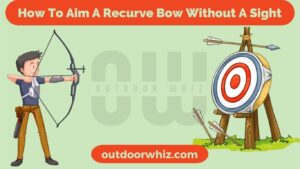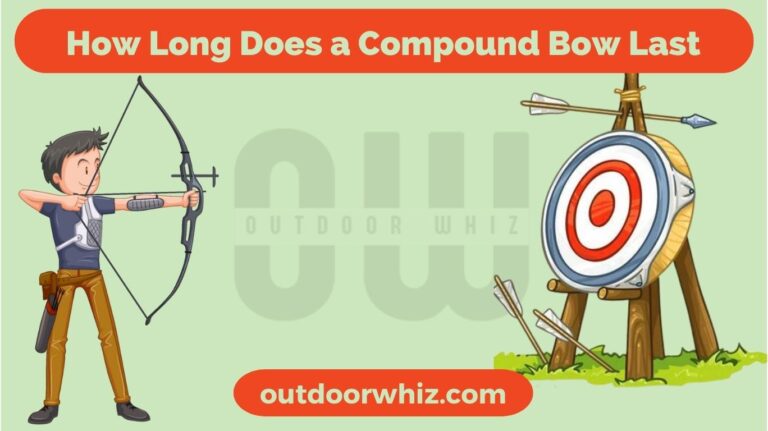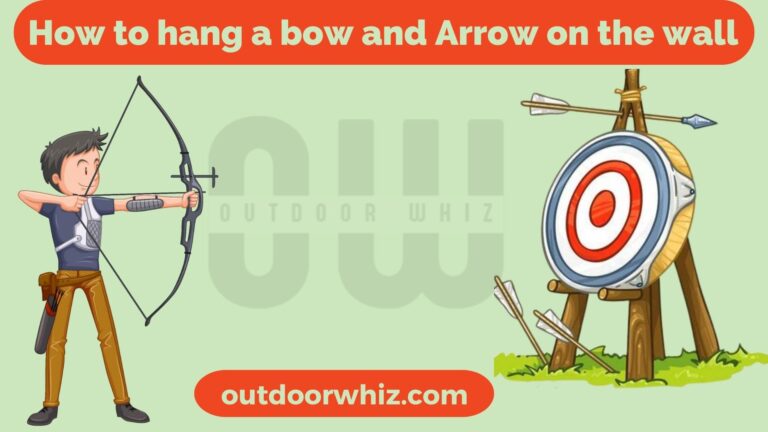Recurve bow is becoming more and more popular with archers. It is a traditional archery style that, a few years ago, seemed to lose more than the new modern style.
However, this type will be quite a challenge, especially for newbies, because it does not come with a sight.

So, how to aim a recurve bow without a sight? Scroll down to know more!
Page Contents
How To Aim A Recurve Bow Without A Sight?
If you’ve mastered shooting a recurve bow, you might be interested in learning how to do so without sight. For a novice, shooting without sight is a great way to improve their accuracy and refine their skills. Different methods like gap shooting, face walking, and string walking help shooting recurve bow without a sight.
How Do You Aim a Recurve Bow Without a Sight?
Here you have methods of shooting a recurve bow without the much-talked-about precision aid.
Gap Shooting Method
Gap shooting requires using the arrow’s tip as a point of aim. A repeatable shot procedure is crucial for gap shooting. Repeatedly, every shot should be identical.
At 10 yards, you might point the arrow below the bullseye’s center. You could adjust the arrow beyond the bullseye’s center at fifty yards. The arrow’s tip should aim directly toward the target’s point at a specific distance.
- You should be aware of your distance from the target before you shoot.
- Put your arrow point on the target’s center at a distance of five yards before starting.
- Calculate the distance between the impact and the target’s centroid. This distance is far from you, about five yards.
- Step back 10 yards, then shoot one more.
- Check your gap once more while aiming for the point.
- Your gap is now at a distance of 10 yards.
- Say it measures 12 inches.
- It’s essential to understand that to strike the target at 10 yards; you must adjust it about 12 inches from the bullseye.
String Walking
It is another popular method on how to aim recurve bow no sight. Your arrow should point in the target’s center if you use string walking. The distinction is that your hand should go up and down depending on how far away the target is.
The bowstring position will impact the arrow to guarantee that you strike your target even though your anchor point stays the same. It will alter the interaction between the arrow and your view by adjusting where you grip the bowstring. An arrow will fly higher or even lower as a result.
Your hand should be lower with the string the nearer you are to your intended target. Several players even estimate the grooves on the servings for each distance shooting. When compared to the gap shooting method, string walking is a more advantageous technique.
The disadvantage of this method is that you cannot extend it beyond a specific range. It is an exact method for doing without sights for the range at which it does work.
Face Walking
Consistency with anchor points is one of this method’s main drawbacks. This method can be made more difficult for various facial shapes. Face walking can be precise but is not as accurate as other techniques.
However, it does have the benefit of a constant aiming point. Your arrow’s tip will remain fixedly pointed at the bullseye’s center.
The following technique is known as face walking. Similar to string walking but done the other way around. Your anchor will move in place of your hand, traveling up and vice versa.
You can alter the arrow impact based on the distance. The bow’s tone does not alter with distance is its significant benefit. It is because the hand always rests on the bowstring in the same spot.
Instinctive Archery Method
You don’t “aim” at the target while shooting instinctively. Instead, you fix your attention on the spot where you want your arrow to land. Then you draw your bow, aim, and fire. An archer will accomplish all this while maintaining a laser-like focus on the chosen target.
The most conventional method of shooting a bow without sights is the instinctive archery method. Bows were initially utilized in this manner.
You focus on the target while allowing your body and brain to adjust for the shot you want to make. When you use this technique more, your brain will adjust to hit your target better.
- Start by assuming a comfortable, squared stance with your feet.
- Point your arrow downward at the ground before you after knocking it.
- Concentrate on your target, elevate the bow, and then release the string smoothly.
How To Shoot a Recurve Bow Without Arrow Rest
If your bow does not have arrow rest, then don’t worry. You can still aim and hit your target with accuracy. It is fair to shoot an arrow without any arrow rest because many bows you will see in the market are designed to shoot off the shelf.
The only solution to use the bow without arrow rest is to hold the arrow with a specific angle; you only need the experience to hold the arrow like this. If you are a beginner, you must try to get the bow with arrow rest; without it, you cannot practice as a beginner.
You can use a bow without arrow rest with little skill if you are an expert archer. The skill you have to follow is to use your first and second joints and place the string between your middle and ring finger.
By following this technique, you can hit the arrow precisely at the center of the target.
Steps for Using a Recurve Bow Sight
Now you may ask how to use recurve bow sights. Well, I have got the information ready for this part!
Here we’ll guide you through the whole process in detail so you can easily sight in your bow hit the bull’s eye.
So without wasting much time, let’s get into that part.
Step 1: Set the Sighting Pin Adjustment
Before sighting in, you need to set all the sighting pins to the middle point. This way, you will get enough room in any direction you want. For this step, you need an Allan wrench to make the adjustments.
Step 2: Set Up Your Target and Mark Ranges
First, set up your target on the ground and then mark your ranges off every 10 yards. You should mark off ranges up to 40 yards for an optimal experience. If this step is too complicated, get a range finder to achieve perfect accuracy.
Step 3: Sight-in Your Bow
Finally, you can start sighting in your bow. And here are the correct orders for doing it correctly.
- Firstly, you need to set your 20-yard Pin, the first one. Now, go to the closest distance, around the 10-yard mark.
- Secondly, stand in the way so your body seems at a 90-degree angle to the target, and then draw an arrow back using your bow.
- Thirdly, you need to look down the sight at the top Pin. After that, start shooting your arrows at the target. And keep repeating it.
Step 4: Set Your 30-yard Pin
After doing your 20-yard estimate, it is time for the 30-yard Pin. Go to your 30-yard mark on the range, and using your second Pin, aim down the side. Shot some arrows with the same adjustment you made at your 20-yard mark.
While doing this step, take all the time you need to make the 30-yard Pin super accurate. It will be the anchor of your sight, and this won’t change. So be careful when you are doing it.
Step 5: Go Back to the 40-Yard Pin
During this step, you have to shoot arrows at the target. And you need to keep looking at the 40-yard Pin with the sight.
While making adjustments at this stage, you must move the Pin instead of the sight box. You won’t have to move left or right with the sight box to shoot the target. Just focus on making the 40-yard arrow hit the pinpoint.
Step 6: Check Your 20-Yard Shot Again
After making the 30 and 40-yard adjustments, check your 20-yard settings by shooting arrows. And then, make any adjustment needed by moving the Pin, not the entire sight box. Well, this was everything on how to use a recurve bow sight!






